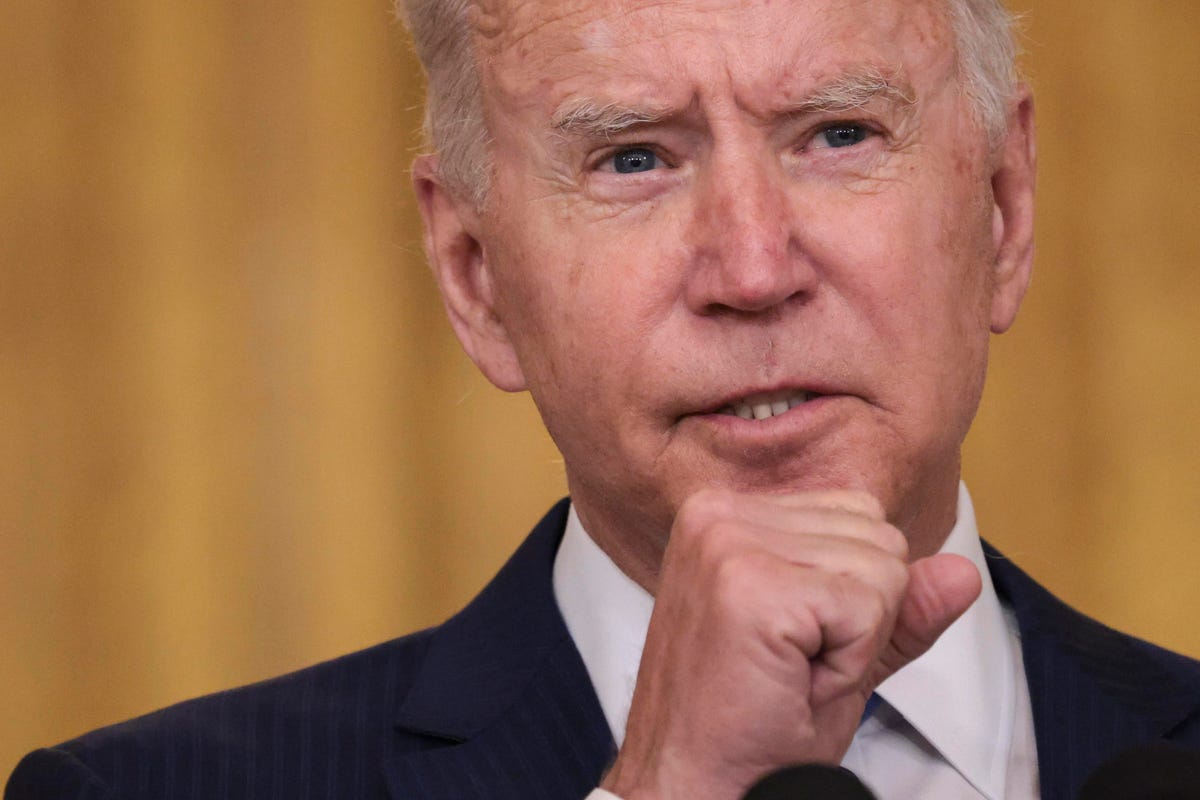
WASHINGTON, DC – SEPTEMBER 16: U.S President Joe Biden speaks during an event in the East Room of … [+]
Over the the last nine months, the Biden administration has enacted nearly $10 billion in student loan forgiveness, using executive authority to modify or expand existing federal student loan relief programs.
Student loan borrowers have been clamoring for information about who qualifies, and how to obtain relief. But for the vast majority of borrowers who do qualify, no action is required. That’s because most of the covered student loan forgiveness initiatives will be implemented automatically, and borrowers will be notified by the Department of Education. In short, if you qualify, you’ll probably know.
Here’s are the details:
- $1.5 billion in expanded relief through the Borrower Defense to Repayment program, which wipes out federal student loans for borrowers who were defrauded by their college, university, or trade school. While borrowers can submit an application for Borrower Defense relief, the $1.5 billion in cancellation announced by the Biden administration earlier this year only expands relief for borrowers who were already approved. The administration reversed a Trump-era “partial relief” policy that had permitted the Department to continue collecting at least some of the covered federal student loan debt for approved Borrower Defense claims; now, the Department will be completely wiping out any remaining federal student loan debt for borrowers covered by the expanded relief. The Department of Education has already started notifying borrowers.
- $1.1 billion in student loan cancellation under the Closed-School Discharge program for former students of ITT Technical Institutes, which shut down in 2016. Most borrowers will not have to affirmatively apply for this relief. According to the Department of Education, “borrowers who are eligible for a closed school discharge and attended an [ITT] institution that shut down between November 1, 2013 and July 1, 2020 will receive an automatic discharge as long as they did not enroll in another institution within three years of their school’s closure.” Most impacted borrowers did not enroll elsewhere, but for those who did, they may need to submit a Closed School Discharge application.
- $5.8 billion in federal student loan relief through the Total and Permanent Disability (TPD) discharge program. This will result in federal student loan cancellation for borrowers who have been determined to be disabled by the Social Security Administration and are receiving Social Security Disability benefits with a disability review period of at least five to seven years. The discharges will be automatic, as the Department of Education will use data-sharing tools with the Social Security Administration to determine who is eligible. Borrowers who qualify should be notified.
- $1.3 billion in reversed loan reinstatements for TPD borrowers who had their previous disability discharges undone during the pandemic because of a failure to comply with the Department of Education’s post-discharge monitoring requirements. The Biden administration is indefinitely waiving TPD monitoring requirements going forward while officials work to revamp the regulations governing the TPD program. Loans that were reinstated during the pandemic will be automatically returned to their previously-discharged status, and impacted borrowers should be notified.
- The Biden administration will be retroactively wiping out accrued federal student loan interest for current and former active-duty military service members who were entitled to an interest waiver for deployments in hostile pay areas, but did not request or receive the interest waiver benefit. No application is required — the Department of Education indicated that it will “automatically provide the student loan interest benefit to eligible service members” through data-sharing tools with the Department of Defense.
Thus, the vast majority of relief covered by the Biden administration’s student loan initiatives will be automatic, and borrowers should be notified. That said, the Department of Education has recently demonstrated that its communications with borrowers is far from perfect. For example, at least some notifications to borrowers who qualify for the expanded Borrower Defense relief came more than six months after the original announcement, and included some erroneous information. The Department of Education quickly addressed the errors, however, and assured borrowers that the delays and mistakes had “no negative impact [on] approved claims.”
Meanwhile, advocates for student loan borrowers continue to push the Biden administration to expand its student loan forgiveness initiatives. The administration has been relying on a “targeted” approach of student loan cancellation using existing federal programs. This has produced very real results for hundreds of thousands of borrowers, but $10 billion represents a small fraction of total outstanding federal student loan debt. The Biden administration continues to review legal authorities that could be used as a basis for broader debt relief.
MORE FOR YOU
Further Reading
These Student Loans Are Excluded From Biden’s Loan Forgiveness And Relief Programs — Here’s Why
Student Loan Borrowers: Expect These 4 Things By January
Biden Administration Starts Overhaul Of Student Loan Forgiveness, Income Based Repayment Programs
This Student Loan Forgiveness Program Is In Crisis, New Findings Confirm. Will Biden Fix It?







